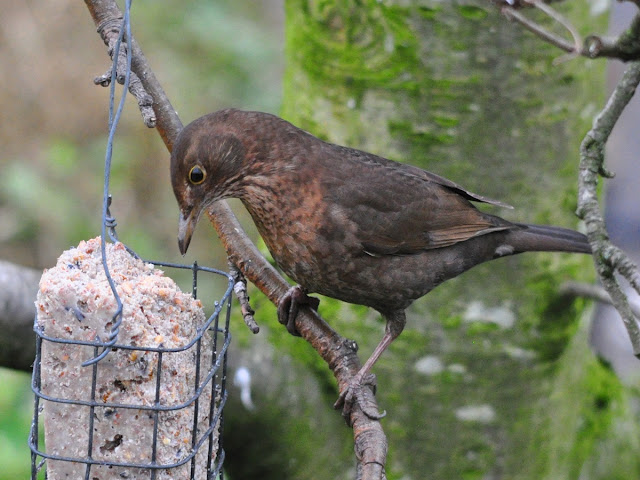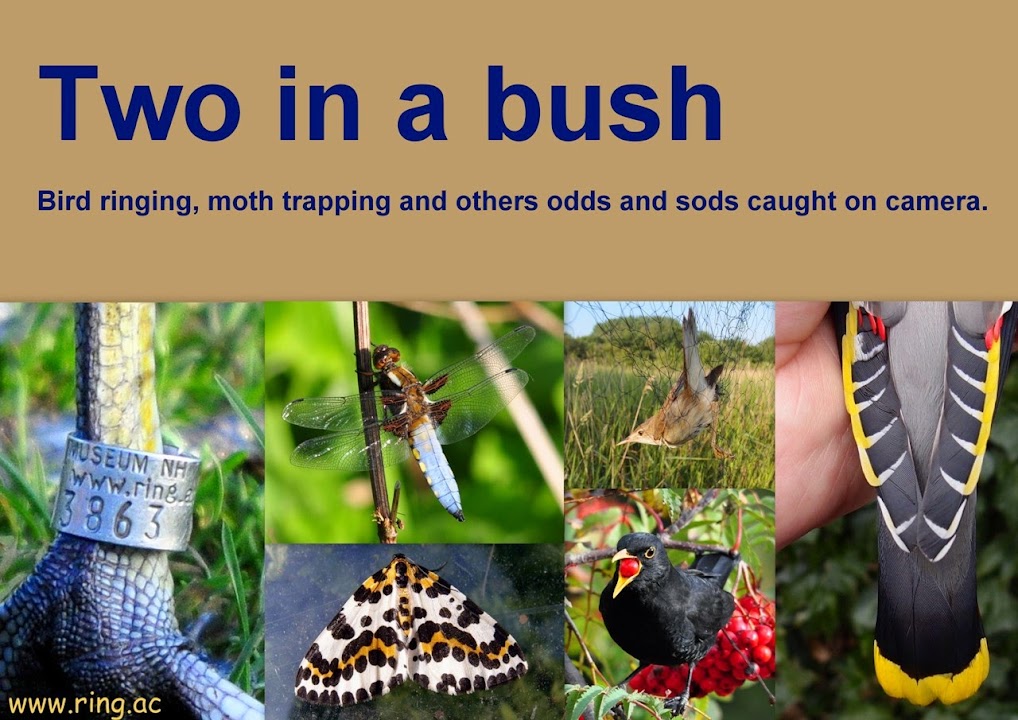 |
| Goldcrest 12/02/2016 |
 |
| Caught in the act. |
In previous years I have occasionally seen the odd one taking food particles that had fallen onto twigs below some of the feeders, also taking small fragments from the base of a sunflower heart feeder and occasionally pecking at the fat blocks but it doesn't happen every winter.
 |
| It must have found a really good bit up there. |
The Goldcrest came to the fat block about every 20 minutes and only stayed for about a minute on each visit so I ended up taking quite a few photos of some of the other visitors. And, as I have commented on before, there wasn't a single House Sparrow amongst them.
 |
| Male Pied Wagtail. Two Pied Wagtails regularly come to feed on scraps below the feeders, this male and a very grey backed female that looks similar to some White Wagtails |
 |
| Blue Tit Tits had a fairly poor breeding season last year and very few have been coming to the feeders this winter |
 |
| Coal Tit Like Blue and Great Tits there have been fewer Coal Tits coming to the feeders this winter. |
 |
| This first-year female has escaped infection, so far at least. |
 |
| Female Blackbird |
 |
| There seemed to be a few more Goldfinches around today with up to 25 in the garden at any one time. |
 |
| Adult male Siskin and what a stunner. |
 |
| There was plenty of argy-bargy at the feeders. |







No comments:
Post a Comment